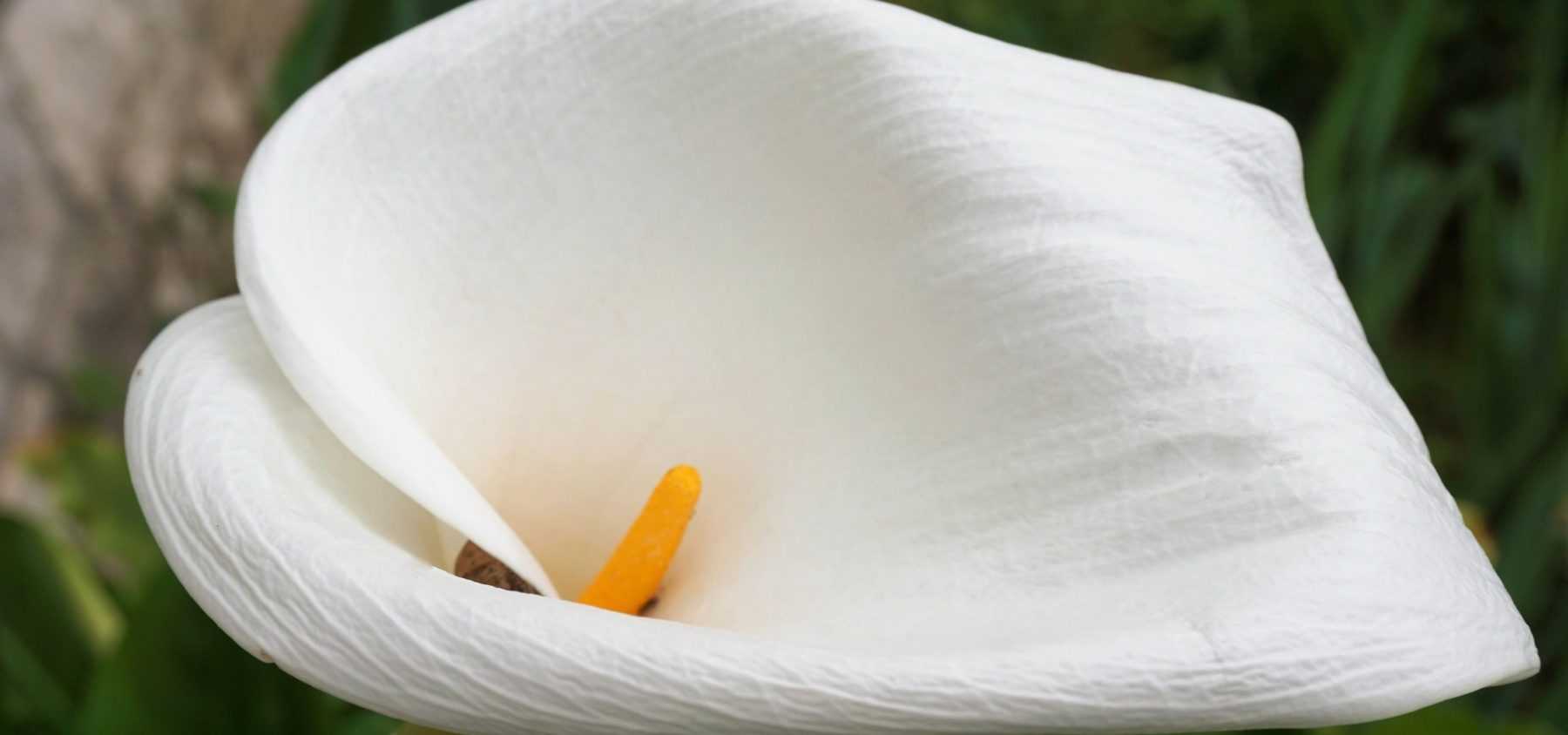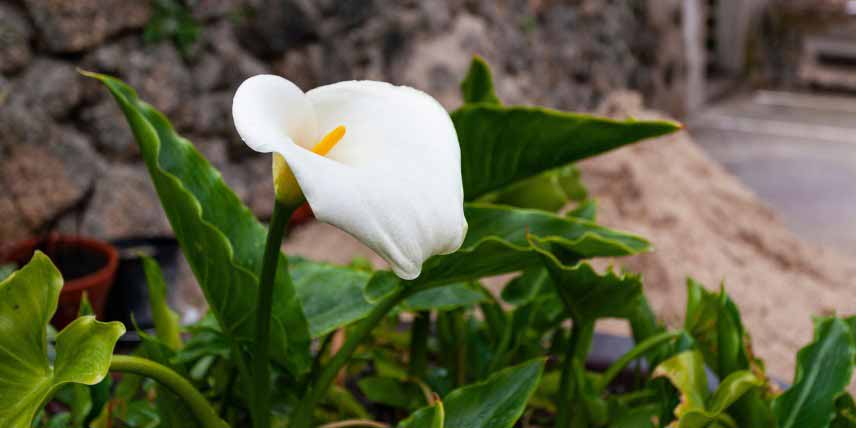
Planting Arum Lilies
Where, when and how?
Contents
Ethiopian arums or calla lilies, also known as Zantedeschia, are elegant and fascinating plants that add an exotic touch to any garden. With their large glossy leaves and cup- or trumpet-shaped flowers, these plants are often associated with refined gardens or floral arrangements. To successfully grow arums, it’s essential to understand how and when to plant their bulbs. Let’s discover how to properly plant our arum bulbs.
→ To learn more about growing arums, feel free to explore our plant family guide: Arums: planting, growing and care.
When to plant calla lilies?
The ideal time to plant arum bulbs is in spring, when temperatures begin to rise and the risk of frost has passed. Generally, this corresponds to a period from March to May, depending on the region. Arums need warmth to develop, which is why they should be planted after winter.
Where to plant arum lilies? (Note: I've used "arum lilies" as the common British English name for "arums" (Zantedeschia), which is more familiar to UK gardeners than just "arums". The translation maintains the question format while adapting the plant name for the target audience.)
Arums or callas thrive in bright areas but should not be exposed to direct sunlight constantly. Partial shade is ideal for them, especially in regions with very hot summers. They can be grown in the ground in gardens or in pots if you wish to move them or protect them from the cold.

The flowering of an Arum, Zantedeschia aethiopica
Choosing the right planting substrate
Arums appreciate rich, well-drained soil. It’s important to avoid waterlogging which could cause the bulbs to rot. Slightly acidic to neutral soil (pH 6-7) is preferable, but calla lilies aren’t particularly demanding in this regard. If your soil is heavy or clay-based, don’t hesitate to amend it with compost to improve drainage.
How to plant arum lilies?
In the ground
- Prepare the soil: loosen the soil to a depth of 20 cm. Add compost if your soil is heavy or poor.
- Planting depth: plant the arum bulbs at a depth of around 10 cm, with the pointed end facing upwards. Space them 30 to 40 cm apart to allow for proper growth.
- Initial watering: after planting the bulbs, water moderately to moisten the soil, but avoid waterlogging. Arums don’t need much water initially, just enough to keep the soil fresh.

Arum bulbs
In pots
Required materials
- A pot with a minimum diameter of 30 cm, with drainage holes
- Gravel or clay pebbles for the bottom of the pot
- Rich, well-draining potting compost
- Compost
- Watering can
Steps for planting arums in pots
- Choose a pot with a minimum diameter of 30 cm to allow the roots to develop properly. Ensure there are drainage holes at the bottom to prevent waterlogging, as arums dislike having waterlogged roots.
- Before filling your pot, place a layer of gravel or clay pebbles at the bottom (about 2 to 3 cm) to ensure good drainage.
- Mix universal potting compost with compost to enrich the soil. Fill the pot with this mixture up to 10 cm from the rim.
- Plant the calla bulbs at a depth of 8 to 10 cm, with the pointed end facing upwards. Space them 10 to 15 cm apart if planting multiple bulbs in the same pot.
- After planting the bulbs, water lightly to settle the compost and moisten the soil without waterlogging it.
Aftercare following planting
- Regular watering: Once calla lilies have started growing, maintain consistent soil moisture, especially during active growth periods. Be careful, they dislike waterlogged conditions, so ensure the soil remains moist but never soggy.
- Fertilisation: To encourage abundant flowering, apply a balanced phosphorus-rich fertiliser every 4 to 6 weeks during the growing season (spring and summer).
- Deadheading: Regularly remove spent flowers to encourage the plant to produce new blooms. This also prevents the plant from wasting energy on seed production.
- Frost protection: Calla lilies aren’t very frost-hardy. If you live in an area where temperatures drop below 5°C, it’s best to dig up the bulbs in autumn to overwinter them in a dry, cool, dark place. For potted specimens, simply bring them indoors to a cool but bright location like a conservatory or well-lit garage, and reduce watering until spring growth resumes.
- Pest and disease monitoring: While calla lilies are quite hardy, watch for diseases like botrytis (grey mould) or pests such as slugs and snails, which may attack young shoots.
- Subscribe!
- Contents

































